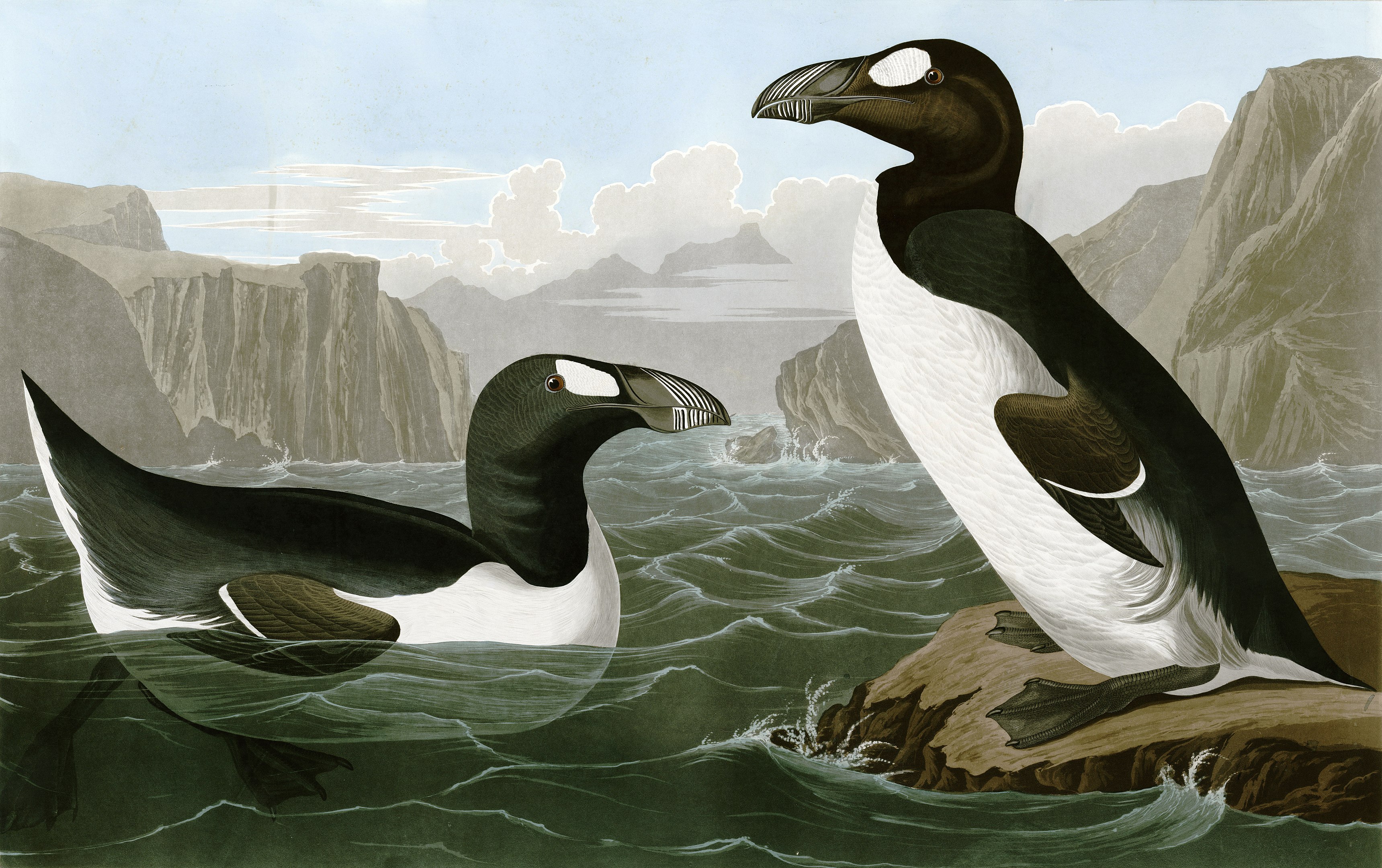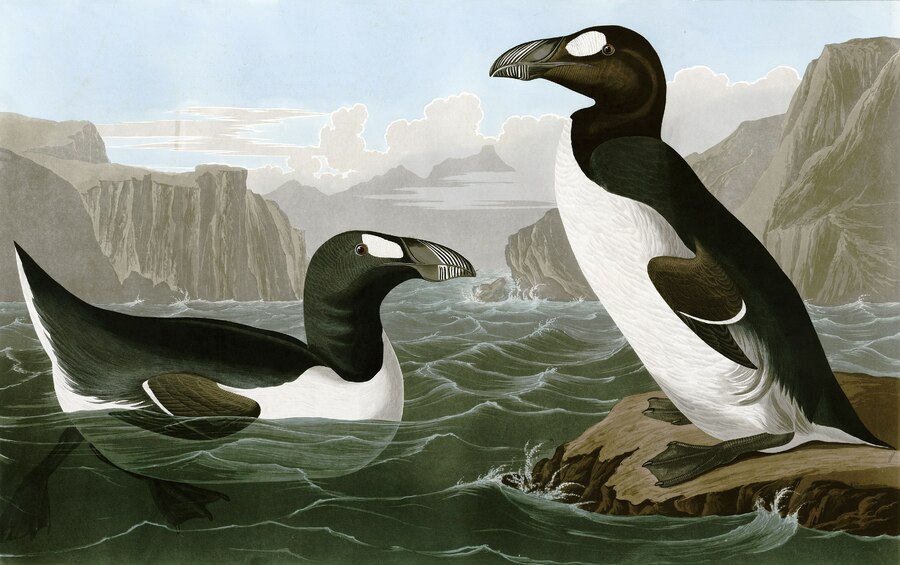Great Auk
Once very abundant on both shores of the North Atlantic, it is now believed to be entirely extinct, none having been seen or heard of alive since 1844, when two were taken near Iceland. The death of a species is a more remarkable event than the end of an imperial dynasty.
-- James Orton (1870) [1]
The Great Auk was a flightless bird found in the North Atlantic, from Canada to Greenland, Norway, and Great Britain. Though similar at first glance, the Great Auk was not related to penguins. With no defenses against man, the Great Auk was hunted to extinction as opposed to habitat reduction. The Great Auk is often used as a symbol of the damage mankind inflicts upon nature.
Classification
- Kingdom: Animalia
- Phylum: Chordata
- Class: Aves
- Order: Charadriiformes
- Family: Alcidae
- Genus: Pinguinus
- Species: P. impennis
Range
The Great Auk was found in the cold waters of the North Atlantic, on the coasts of Eastern Canada, the northeastern U.S., Greenland, Norway, Iceland, the Faroe Islands, Ireland, Great Britain, France, and the Iberian Peninsula. It left these waters for land only to breed, and roosted at sea when not breeding.
Habitat
For roosting, Great Auks used rocky islands with sloping shorelines that provided access to sea, limiting their breeding to no more than 20 colonies. Their main food was fish and crustaceans, with young believed to eat plankton.
Extinction
The Great Auk was a food source for many peoples; as early as 100,000 years ago, there is evidence that Neanderthals used Great Auks for food. Native American populations along the Atlantic coast also consumed Great Auks. Early European explorers found a convenient food source in the populations, both for meat and eggs. While the Little Ice Age may have reduced safe areas for Great Auks by allowing polar bears to access them, massive exploitation by humans for meat, eggs, and down rapidly reduced numbers. By 1844, the last colony was considered extinct, though there was a possible 1852 sighting in Newfoundland.
[1] Orton, James. "Natural History --- The Great Auk." Scientific American 22, no. 14 (1870): 219–219. https://www.jstor.org/stable/26030433.


